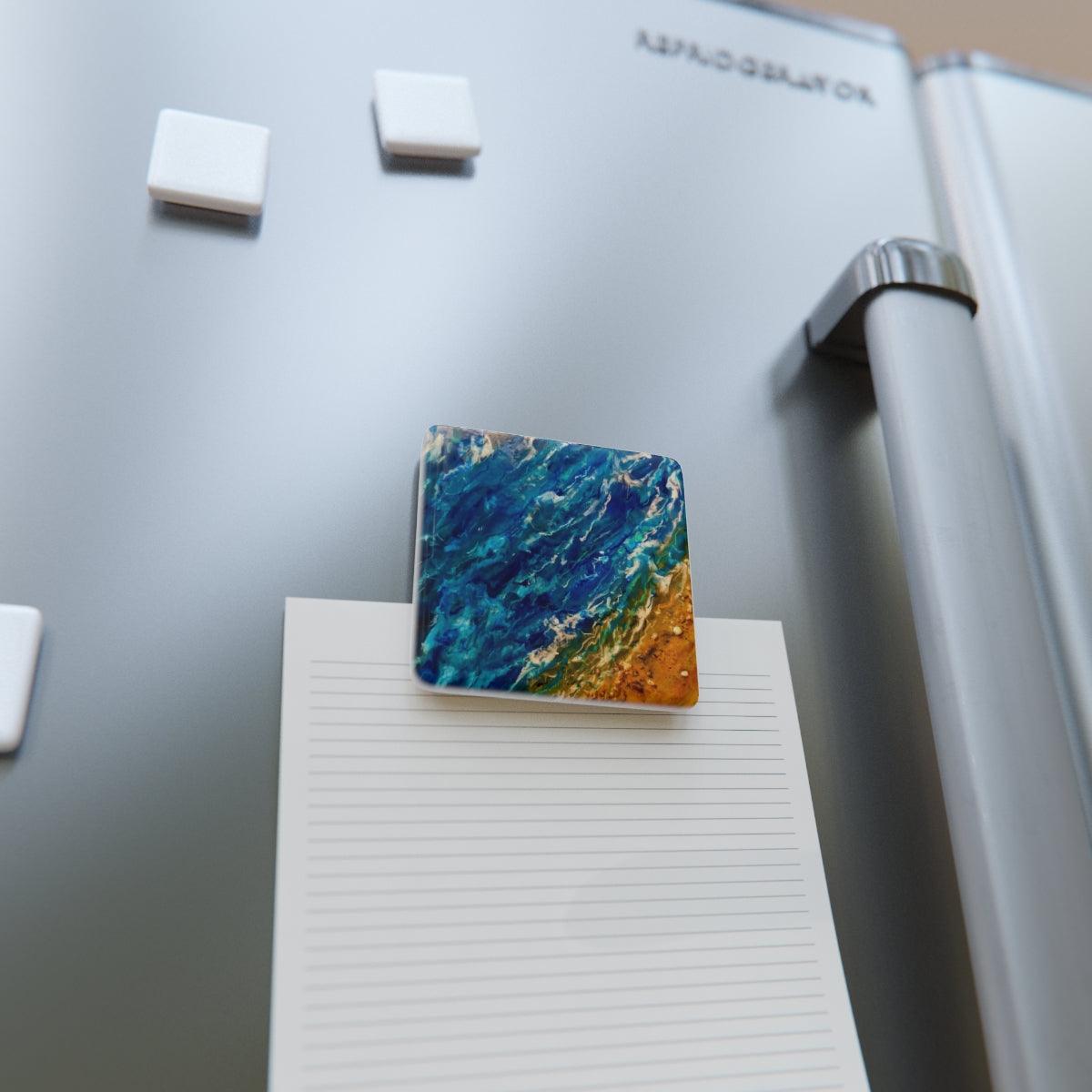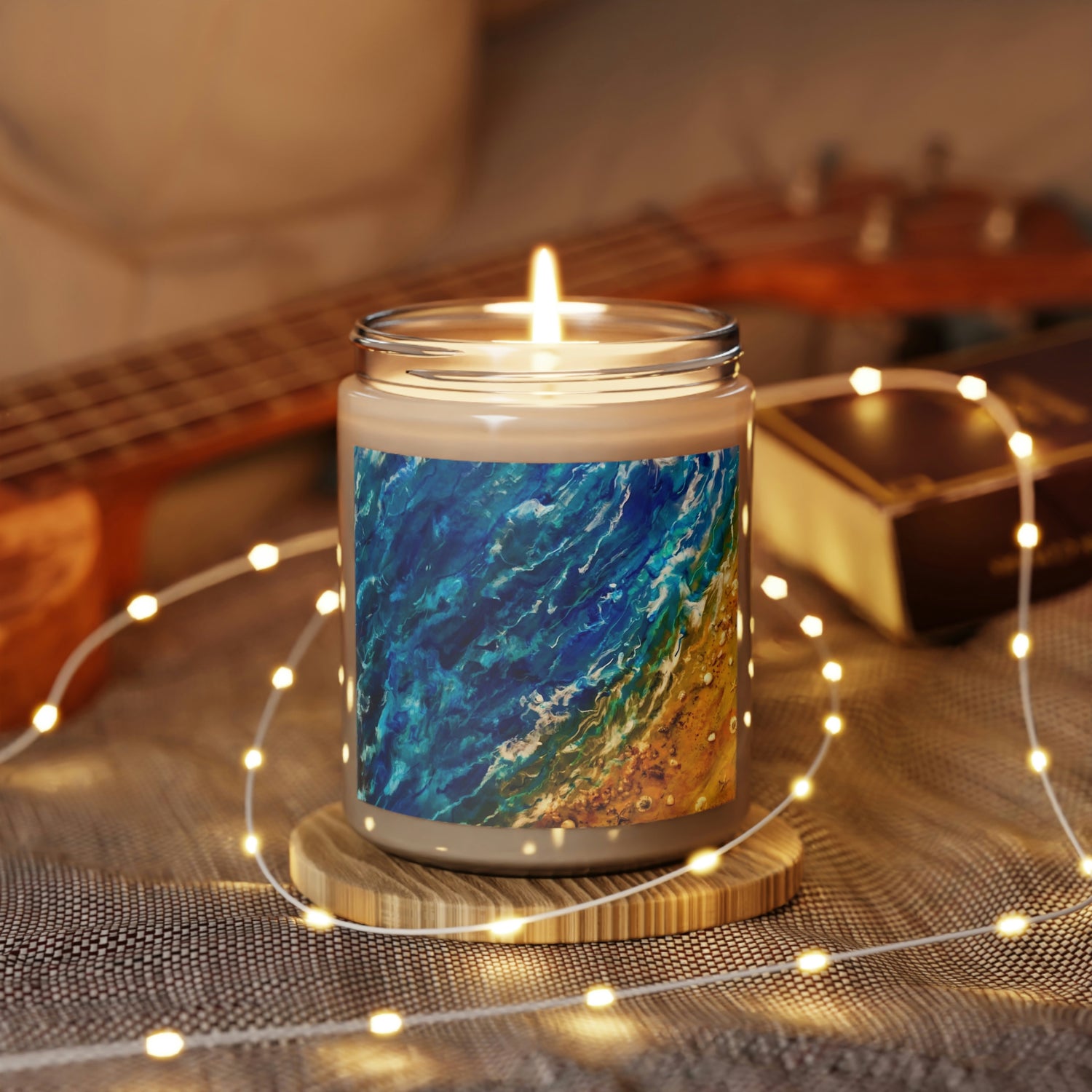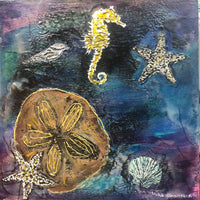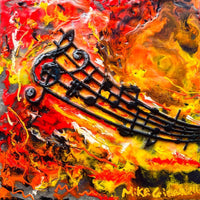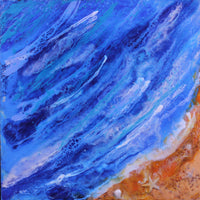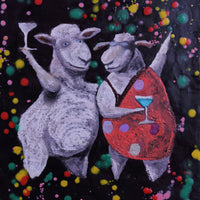Original Encaustic Paintings & Giclee Prints
-
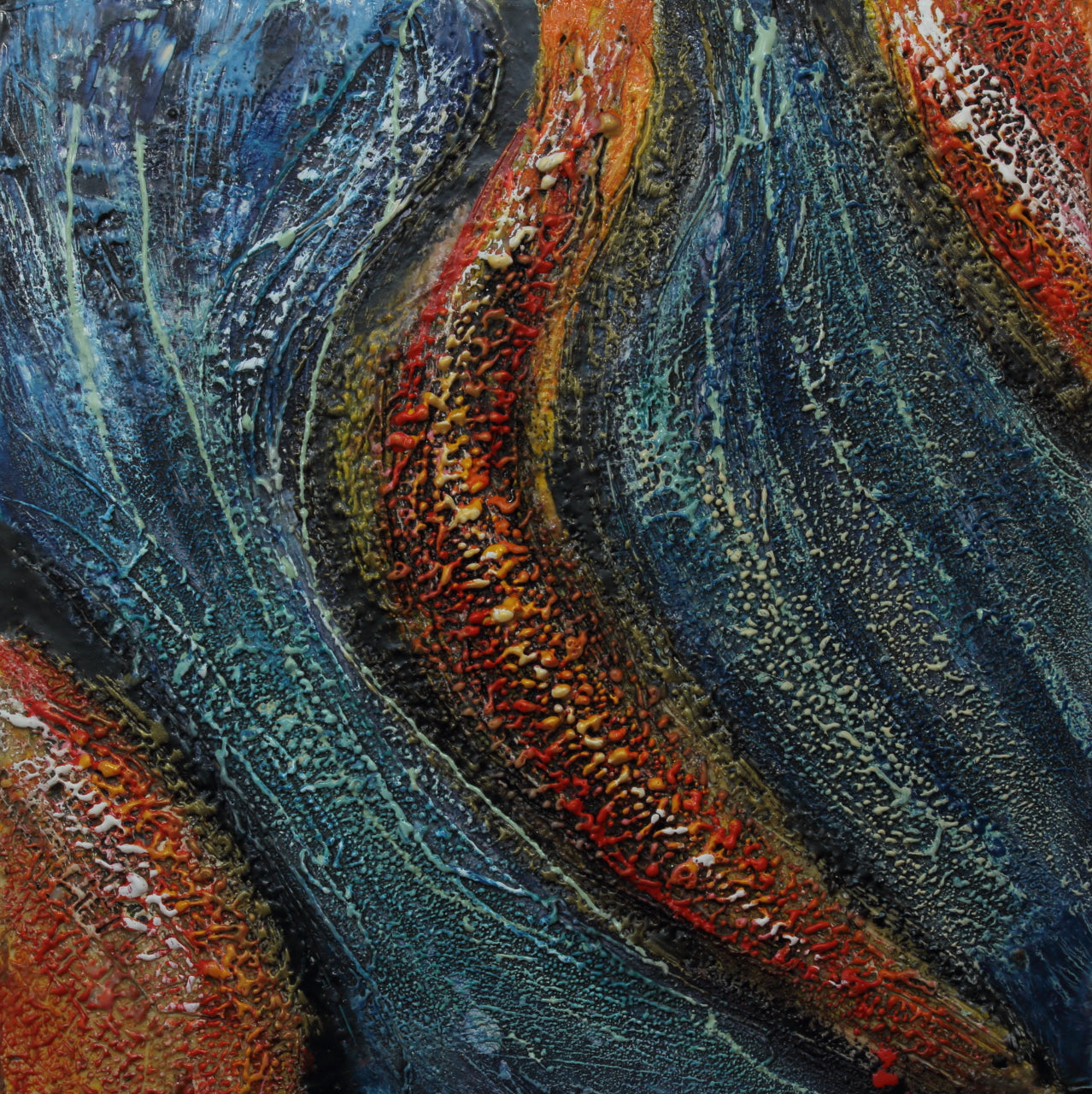
Original Encaustic Paintings
All artwork show in this collection is the original paintings being offered for...
-
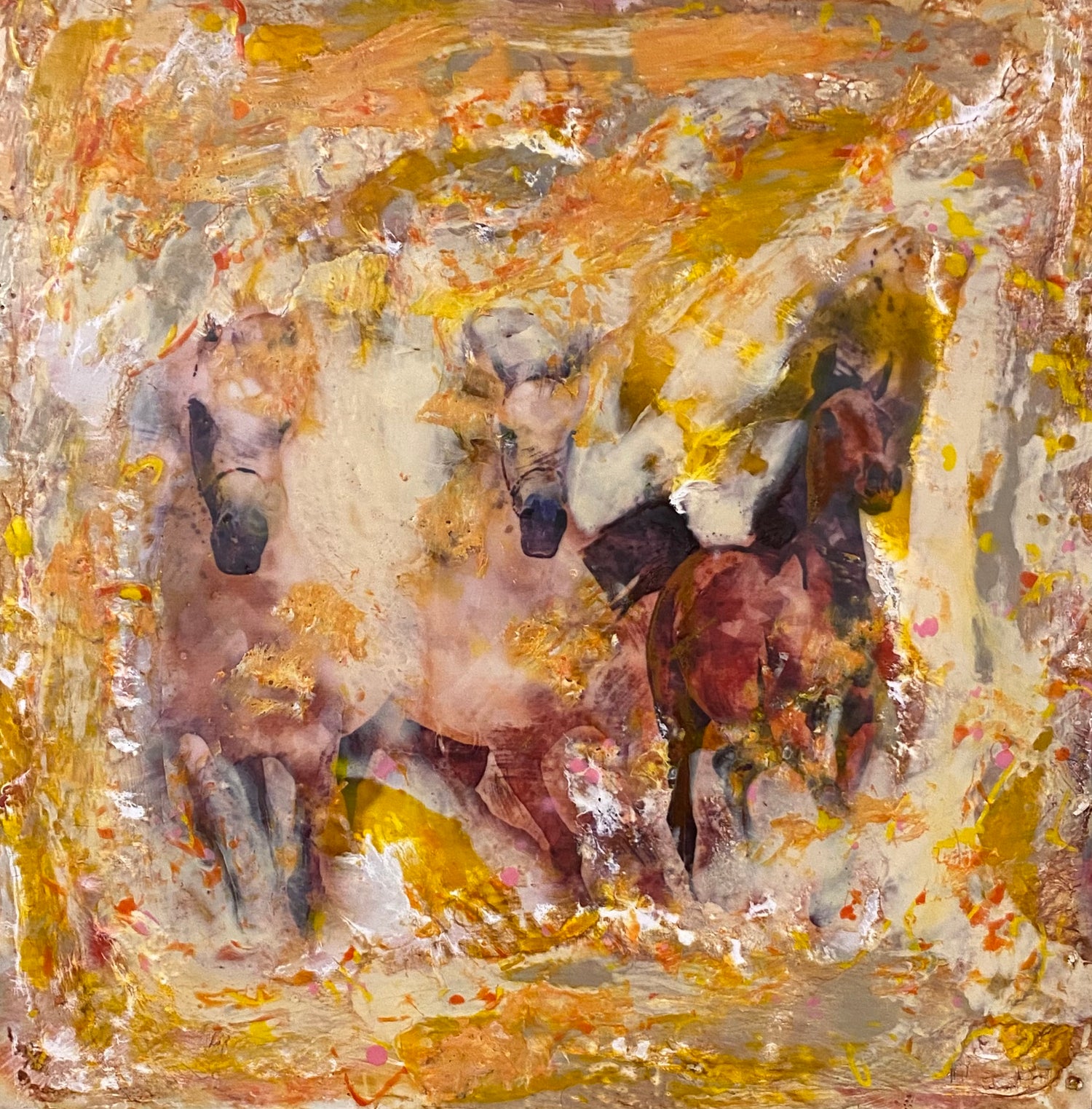
Limited Edition Prints
LIMITED EDITION PRINTS A limited edition giclee art print is a high-quality,...
-
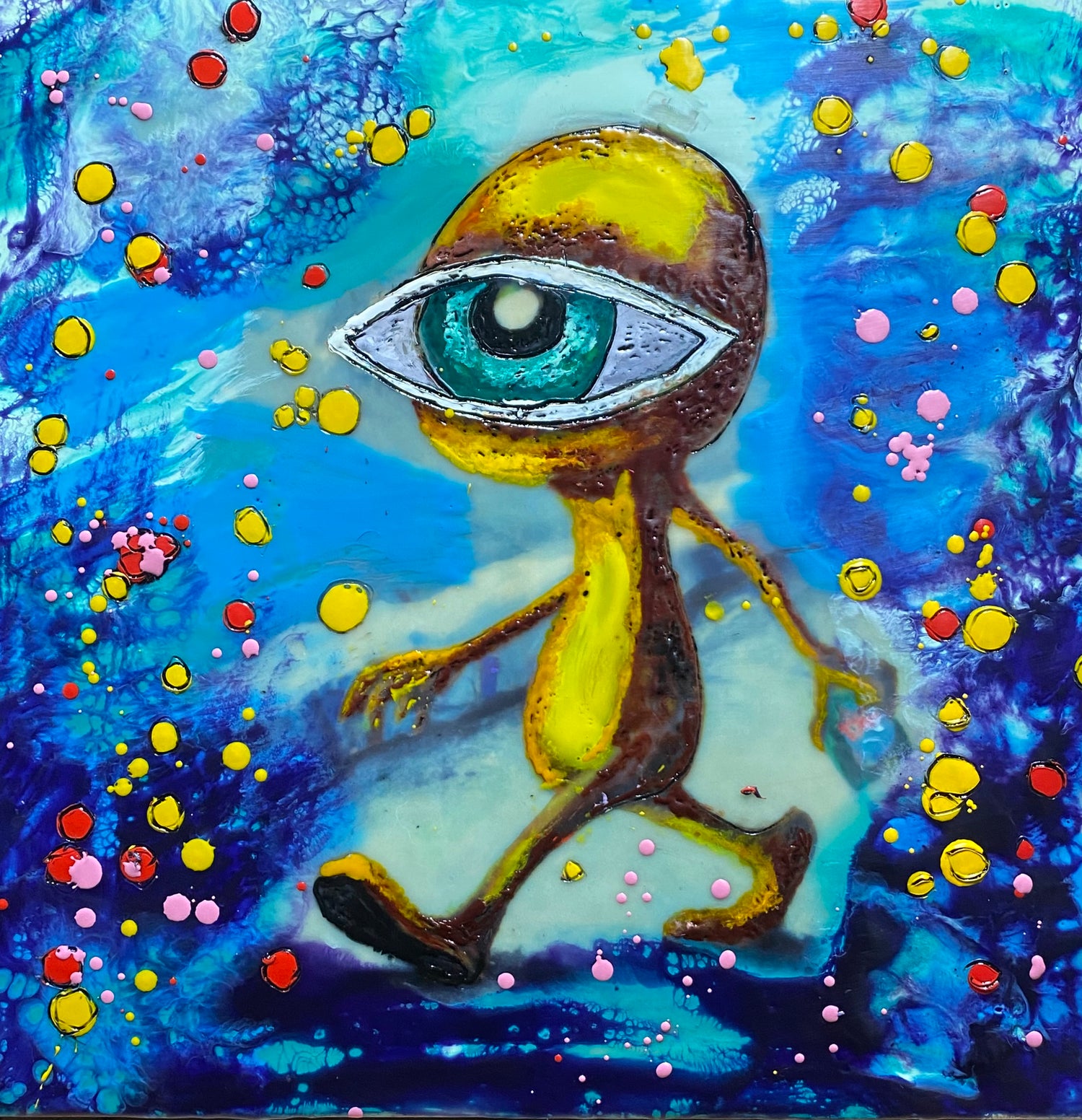
Open Edition Prints
An open edition giclee print is a high-quality copy of an original...
Other Merchandise
-

Puzzles - Printed with Encaustic Paintings
These Puzzles are printed with encaustic paintings on them, making for a...
-

Notebooks | Encaustic Paintings
This section has some superb stationery available for purchase. You can pick...
-

Wine Tote Bag - Printed with Encaustic Paintings
Wine Tote Bag - Printed with Encaustic Paintings. These wine tote bags...
-
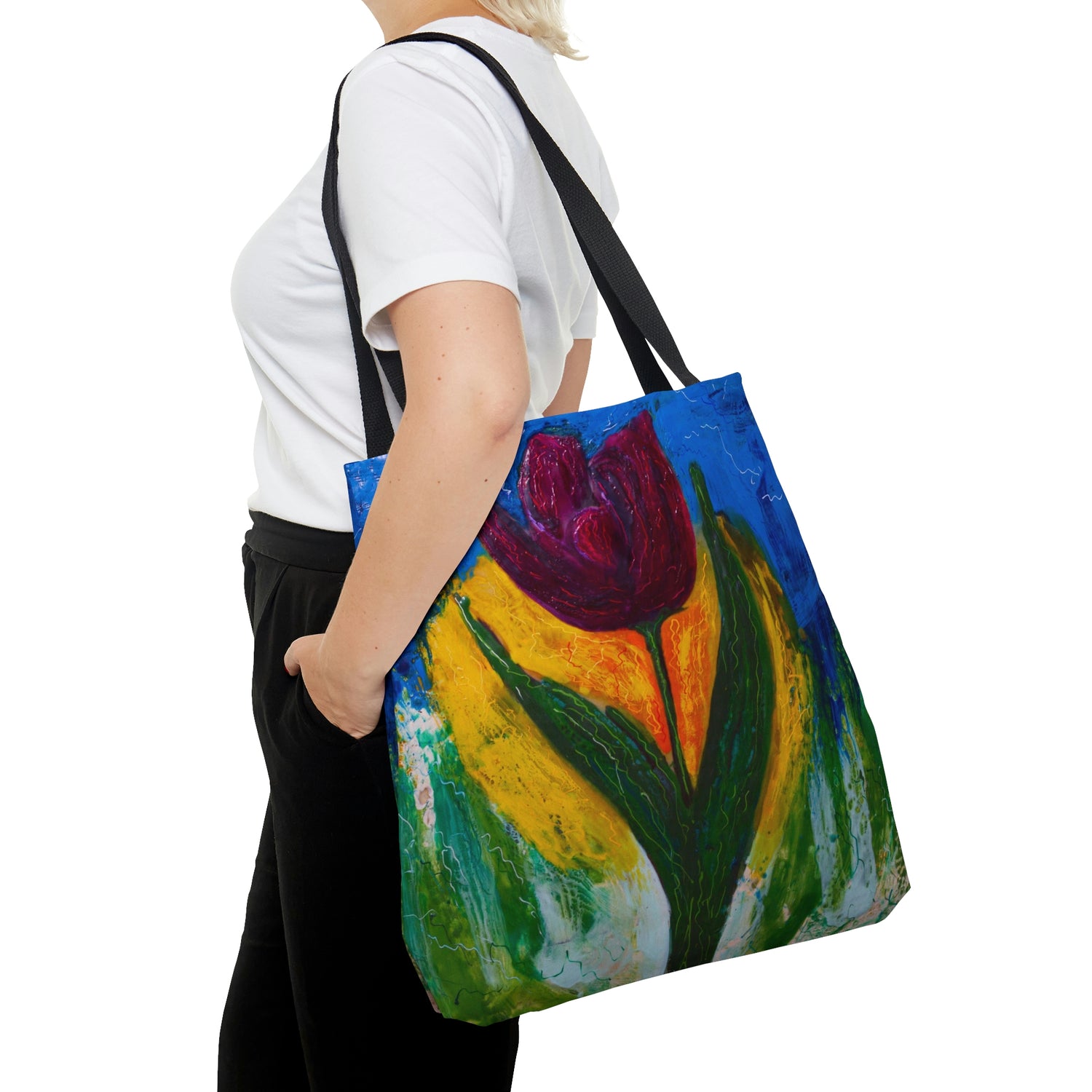
Shopping Tote Bags - Printed with Encaustic Paintings
Shopping Tote Bags. These large tote bags feature beautiful encaustic paintings on...
-
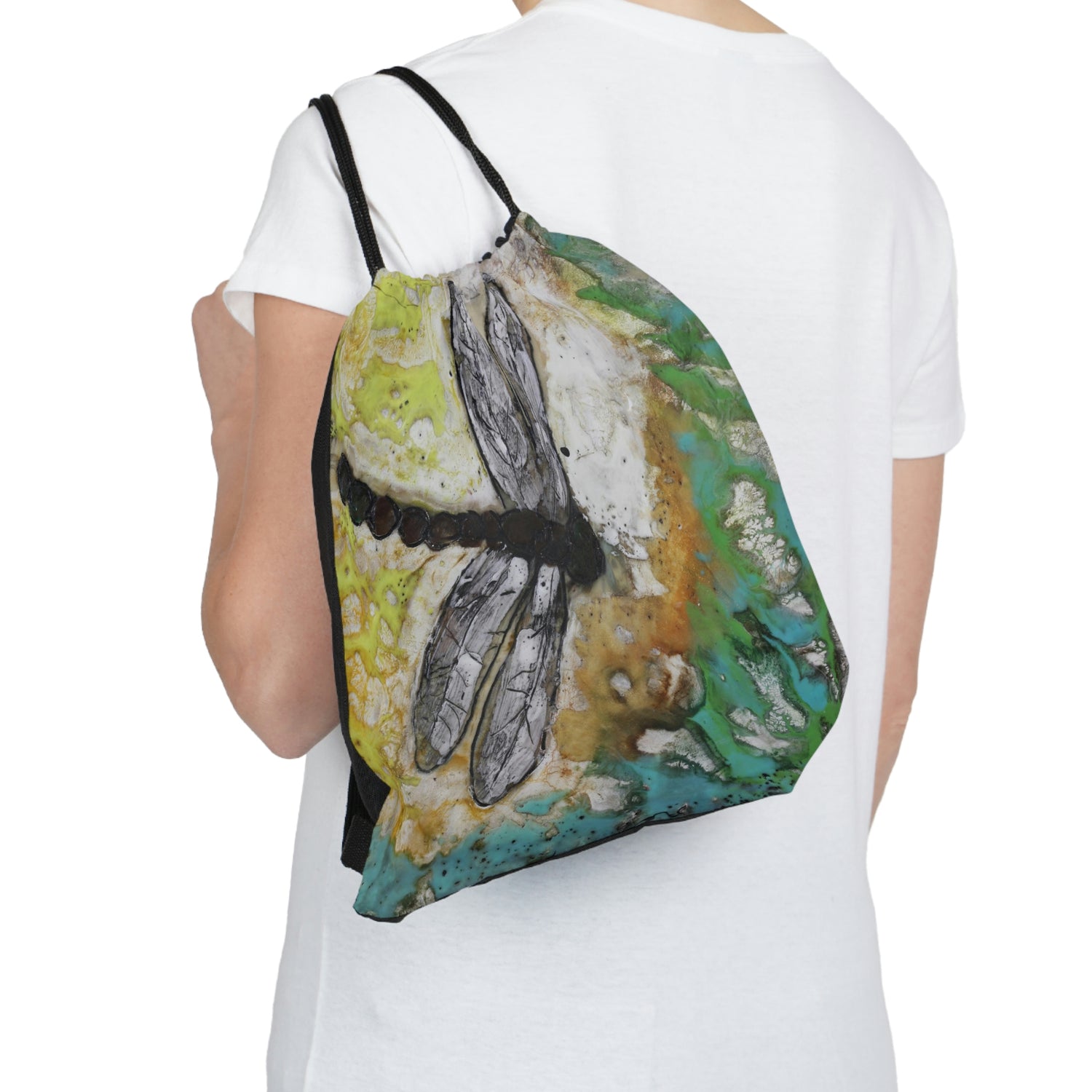
Drawstring Bags - Printed with Encaustic Paintings
These high-quality drawstring bags are perfect for storing a variety of items....
-
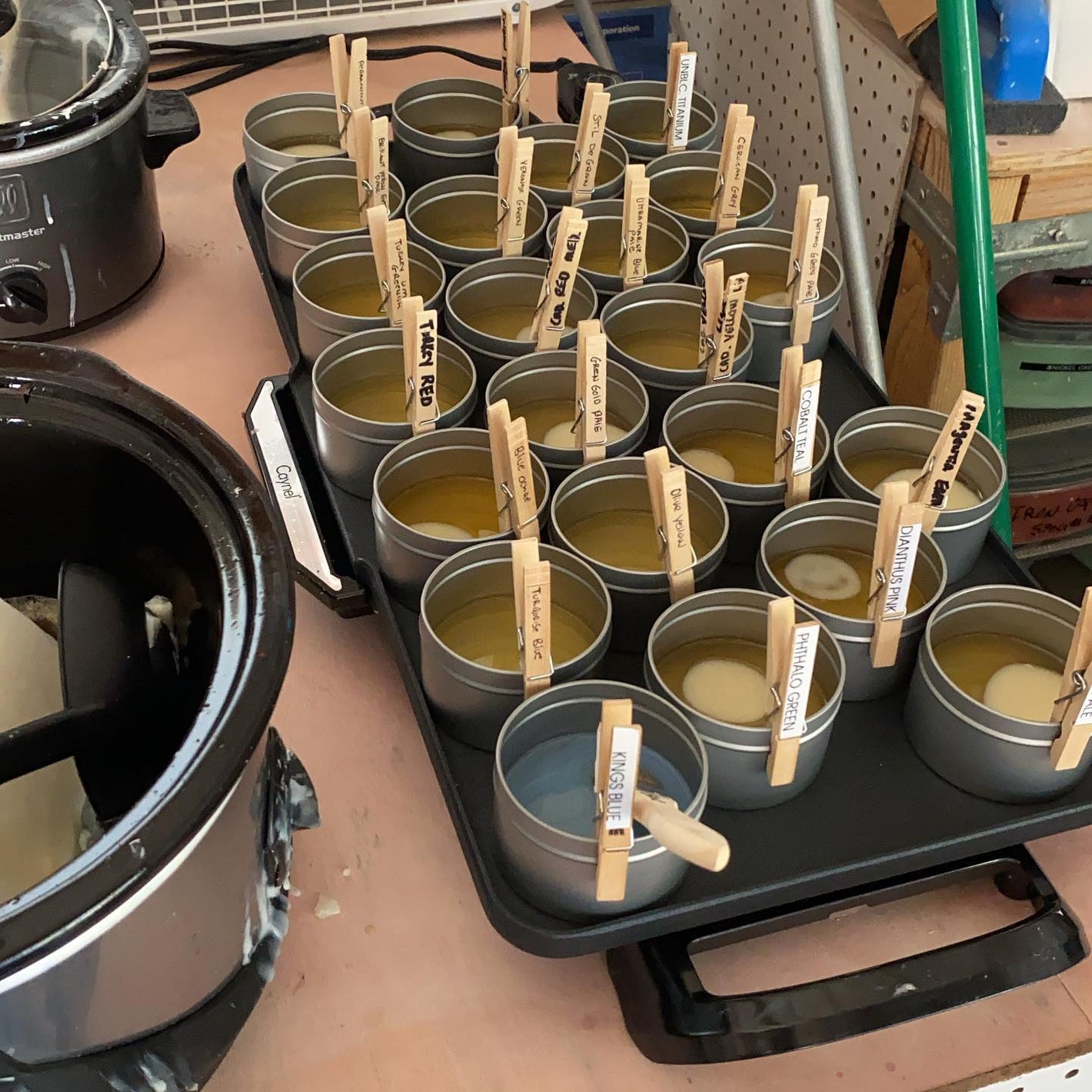
Encaustic Medium
Learn MoreEncaustic consists of natural bees wax and dammar resin (crystallized tree sap). The medium can be used alone for its transparency or adhesive qualities or used pigmented. Pigments may be added to the medium, or purchased colored with traditional artist pigments.
-
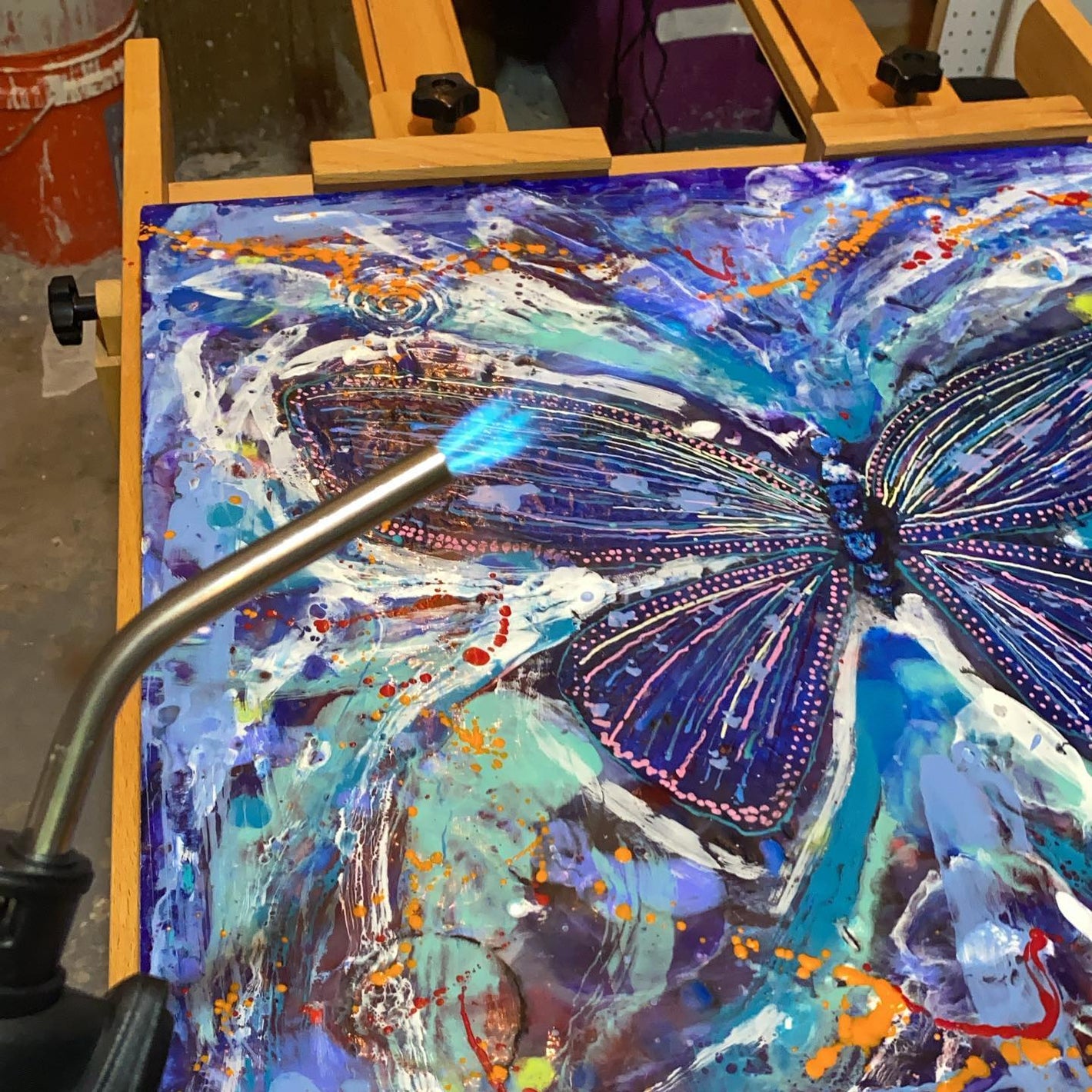
Hot Tools
Learn MoreWhen working with Encaustic, your working with molten beeswax and pigments. The tools used to manipulate the wax are all hot tools. There are a number of different hot tools that work well for encaustic fusing including: the heat gun, embossing heat gun, iron, blow torch and encaustic stylus.. This is all part of the encaustic painting technique.
-

Encaustic Care
Learn MoreEncaustic paintings are very durable. The beeswax and resin are impervious to moisture, making them extremely archival; they will not yellow or darken. Click the link below to learn about how to care and maintain your encaustic painting

Thank you for visiting
Hello and welcome to my website! I'm Mike Giannella, an artist based out of New Jersey who specializes in encaustic painting – a technique that uses a mixture of beeswax, resin and pigments. My artwork features beautiful hues, textured layers and vibrant colors. My paintings run the gamut from abstract to representational, with elements of nature often featured within the pieces.
On my website you will find original encaustic wax paintings for sale as well as giclee prints of some of my work. In addition, I also offer a wide variety of products such as tote bags, mugs and magnets featuring my artwork.
If you'd like to learn more about me and my art, below is a link to my Artist Bio and Statement. Here you can read more about my history as an artist, what inspires me creatively, and the techniques I use in creating these one-of-a-kind pieces.
FAQ
What is Encaustic painting?
Encaustic painting is an ancient art form that involves using heated beeswax mixed with colored pigments and applying it to a surface. This technique has been used since the 5th century BCE by the Greeks and Egyptians and is still used today by modern artists to create beautiful works of art. The waxes are heated and mixed with pigment to create a range of colors, textures, and luminosity that can be manipulated in various ways.
Encaustic painting is often considered an abstract form of art as it allows for a more diverse range of expression than traditional painting methods due to its use of wax and heat. In addition to creating unique visual effects, encaustic painting also has several practical applications such as being able to preserve paintings for many years due to its natural resistance to water, dust, mold, mildew, fire, and other environmental conditions. This makes it an ideal choice for works intended for display or preservation over time.
Encaustic painting is also capable of producing unique tactile qualities which can add interactive elements to artwork or provide interesting surfaces for tactile exploration. With its combination of visual appeal and practicality, encaustic painting is an excellent way to create remarkable artwork that stands the test of time.
Do you teach encaustic painting?
Yes, I do teach encaustic painting! Encaustic is one of the oldest artistic mediums available and has been used around the world since antiquity. It is a truly unique and beautiful art form that provides painters with an amazing array of possibilities for their creations. With its versatile nature, encaustic painting can be used to create both abstract artwork and realistic images that are incredibly durable and archival.
I offer classes designed to teach students all about encaustic painting. Students will learn how to properly melt and apply wax, as well as experimenting with various tools such as brushes, palette knives, trowels and more. We'll also discuss methods for adding color pigments to the wax mixture, working with heat sources, layering techniques and other tips for creating unique impressions in your work.
Additionally, students will discover ways to protect their paintings over time by employing protective coatings such as beeswax varnish or a special type of oil-based varnish which are specifically designed to help further preserve the pigments used within their works over time.
Encaustic painting is a fascinating art form that provides a great opportunity for creative expression. Whether you’re looking to create abstract art pieces or realistic paintings using this medium, I am confident that my classes will provide you with everything you need in order to become a successful encaustic painter! Contact me for more details. My classes are out of my detached 2-car garage in Toms River, NJ. I only teach to one on one classes or for small groups.
What are the benefits of encaustic painting?
Encaustic painting is a versatile art technique that provides many unique benefits. One of the primary advantages of this method is the ability to create stunning visual textures, which can range from delicate wisps and swirls of color to thick, bold strokes. The wax used in encaustic painting also has a natural sheen that enhances the paint colors and adds an extra layer of richness to the artwork.
Additionally, wax resists water damage and is less likely than many other mediums to be damaged by light or heat exposure. As a mixed media technique, encaustic painting allows artists to incorporate other materials such as photographs, cutouts from magazines or newspapers, printed images and more into their work for a truly unique final product. The wax also adheres strongly to surfaces once it has cooled down; this trait makes encaustic paintings particularly long-lasting. Furthermore, encaustic art often has an ethereal quality that lends it an air of mystery and depth – making it highly sought after among collectors and admirers alike.
Finally, unlike oil paints or acrylics which can dry quickly on the palette before they can be used, encaustic paints remain pliable until they are worked with – giving the artist more time to perfect their piece. All these factors combine to make encaustic painting a popular choice among artists seeking something special for their next masterwork!
How do I take care of encaustic?
In order to take proper care of an encaustic painting, there are several key steps that must be followed. First, it is important to avoid exposing the painting to drastic temperature changes, as this can cause the wax to crack and chip.
Additionally, it is important to keep the painting away from direct sunlight, as this can lead to fading or discoloration. When cleaning the painting, you should use a soft cloth and avoid harsh chemicals or abrasive solutions as these could damage the artwork. It is also important to maintain consistent humidity levels in the room where the painting hangs in order to avoid warping or bubbling of the paint.
Depending on how often an encaustic painting is displayed and how much dust accumulates on it, it may need to be dusted off with a soft brush occasionally.
Finally, if any repairs are needed due to cracking or chipping of the wax, you should consult a professional for advice before attempting any repairs yourself. Following these guidelines will help ensure that your encaustic paintings stay looking their best for years!
How do I store my encaustic painting?
In order to store an encaustic painting properly, there are several important procedures that must be followed. First and foremost, it is important to keep the painting away from direct sunlight, as this can cause yellowing or fading of the artwork. Additionally, it should not be exposed to extreme temperature changes, as these could cause cracking or bubbling in the wax surface. The ideal storage environment for an encaustic painting should have a constant relative humidity level between 40-60%, and a temperature of around 70°F (21°C).
It is also a good idea to wrap your encaustic painting in acid-free archival paper or tissue, as this will help prevent discoloration of the piece over time.
Additionally, you may want to use a UV-protective bag or box if your artwork will be stored for an extended period of time, as this will help protect against any damage caused by light exposure. Finally, when storing the painting vertically, make sure that there is something underneath it – such as cardboard – in order to prevent warping or bending due to weight distribution. Following these guidelines will ensure that your encaustic art remains safe and vibrant for many years!
How do I clean my encaustic painting?
In order to keep an encaustic painting looking its best, it is important to clean it properly. One of the most effective ways to do this is by buffing the painting with a soft cloth. This helps to remove any dust and other particles that can accumulate on the surface over time. Additionally, buffing can be used to remove a “bloom” effect, which occurs when wax has been exposed to too much heat or light and appears as a whitish-gray coating on the painting.
When buffing an encaustic painting, it is important to use long, slow strokes rather than vigorous scrubbing motions in order to prevent damage from being done. Additionally, you should use only circular motions when possible and avoid pressing too hard into any one area of the painting. It is also important to periodically check the cloth for wax buildup; if there is any present, the cloth should be replaced before continuing with the cleaning process.
What is the difference between encaustic and other painting media?
Encaustic painting is a unique form of art that involves the use of heat and wax to create vibrant, tactile artworks. This medium differs from other forms of painting in several key ways. First, encaustic paintings are not water soluble and must be heated to a certain temperature (around 170°F) in order for pigment to adhere properly. Additionally, the wax used in encaustic paintings has several qualities that make it distinct from other types of paint, such as its ability to be manipulated into interesting shapes and textures, as well as its resistance to fading or discoloration over time.
When compared to more traditional media such as oil or acrylics, encaustic paints also offer greater flexibility and versatility due to their unique properties. For example, an artist can layer multiple colors together without fear of them mixing or becoming muddy looking; they can also easily adjust the opacity or translucency of their work with just one brush stroke. Finally, because the wax is non-toxic and eco-friendly, encaustic paintings are often seen as a more sustainable option than other types of art materials.
What are the benefits of buying encaustic paintings?
Encaustic paintings have numerous benefits for anyone looking to purchase or own artwork. They are highly durable, as the wax and pigment used to create the painting are resistant to fading and discoloration over time, even when exposed to direct sunlight or extreme temperature changes. Additionally, encaustic artworks offer more flexibility and versatility compared to other types of painting media due to their unique properties; artists can layer multiple colors together without fear of them mixing or becoming muddy looking, while they can also easily adjust the opacity or translucency of their work with just one brush stroke.
Moreover, encaustic art is eco-friendly and non-toxic since it does not use any solvents or chemical additives that could be hazardous. Furthermore, these paintings can be stored safely in a variety of environments without fear of damage due to light exposure or warping from weight distribution. Finally, encaustic paintings also tend to increase in value over time, making them a sound investment for anyone interested in collecting artwork.
What should I look for when purchasing an encaustic painting?
When purchasing encaustic paintings, it is important to look for pieces that have been well-crafted and carefully thought out. Since the wax and pigment used to create the work are resistant to fading and discoloration, it is important to select pieces that feature bright colors, vivid details, and sharp lines. Additionally, the painting should be made with a professional grade of wax; this will ensure that it lasts longer and has a higher level of quality. Furthermore, as each piece of encaustic art is unique, it is best to select paintings that have been handcrafted by an individual artist as opposed to mass-produced prints or copies.
Furthermore, when selecting an encaustic painting, make sure that the artist has used safe and non-toxic materials. Lastly, consider investing in a frame that can provide extra protection from sunlight exposure as well as dust accumulation.
Are Encaustic Paintings Permanent? Will My Painting Last Over The Years?
Encaustic paintings are renowned for their archival properties and can last hundreds of years, making them a great choice for those looking for a lasting artwork. Encaustic paintings require the combination of beeswax and Damar resin, both materials that have been used for millennia and are still employed in encaustic painting today. The wax used is typically a blend of pure bee’s wax, carnauba wax, and/or microcrystalline wax, all materials that provide a natural resistance to ultra-violet rays and other environmental factors that could otherwise cause damage to the artwork.
Compared to other art mediums like oil paint or acrylic paint, encaustic painting has an impressive durability when it comes to its archival qualities. This makes it ideal for those looking for an artwork with a long-term lifespan - provided proper care is taken with regards to hanging or storing the artist's work. As long as the painting stays away from direct sunlight or any other sources of extreme heat or moisture, it should maintain its integrity over time without fading or discoloring as would happen with some other forms of art.
Furthermore, encaustic paints can be buffed or polished throughout their life in order to provide additional protection against environmental damages – something which is not possible with most other types of paints. Additionally, some contemporary artists use additional protective coatings such as beeswax varnish on their encaustic paintings in order to further preserve the pigments used within their works over time. All these features make encaustic painting one of the most long lasting artistic mediums available today – ensuring that your masterpiece will stand the test of time!finishes.
How can I learn more about encaustic paintings?
Encaustic painting is an ancient art form with a rich history and many modern applications. To learn more about the craft, aspiring artists can take advantage of a variety of resources from this blog/website tutorials to books, galleries to other experienced professionals. For those looking for even more in-depth knowledge and guidance, attending conferences like the International Encaustic Conference in Provincetown, MA can be extremely beneficial.
At this conference, attendees can gain insight into encaustic paints and methods from experts in the field as well as explore a variety of techniques through hands-on workshops and demonstrations. In addition to learning about the history, materials and tools used for encaustics, participants also have access to informative lectures that cover topics such as contemporary trends within the medium as well as how to maximize creative potential with encaustics. Moreover, conferences like this serve as an excellent opportunity for networking with other enthusiasts and connecting with potential clients or business opportunities.
To further enhance their experience at the conference, attendees can take part in a series of offsite activities that include visits to local galleries and artist studios or nearby beaches and nature preserves. This way they can explore both traditional maritime landscapes and natural sites while experiencing first-hand how some of these unique locations influence regional artists’ work. Furthermore, these excursions offer participants the chance to learn even more about encaustics through direct observation of various works made by accomplished practitioners from around the world – something invaluable for any aspiring artist looking to master his or her craft!
Encaustic is wax, won't it melt in my home?
Encaustic paintings are generally safe to display in your home, as the melting point of beeswax is between 145-147°F. This means that your painting will be able to withstand a wide range of temperatures without melting or damaging the art.
However, you should always be mindful of extreme heat exposure as sustained high temperature can still cause damage to encaustic works over time.
To avoid this, make sure that you hang or store your painting away from direct sunlight and any other sources of heat in order to keep it looking its best. It is also essential not to store your encaustic painting in a hot car for prolonged periods of time as this could result in the painting melting and being damaged beyond repair.
Are these encaustic paintings one of a kind?
Each painting is an authentic, one-of-a-kind creation.
Do encaustic paintings need to be varnished or sealed or framed?
No, encaustic paintings do not need to be framed or varnished. This type of painting is made with beeswax and damar resin which provides it with a durability that makes framing or varnishing unnecessary.
Framing an encaustic painting can be a great way to add visual interest and protection to the artwork. While framing is not necessary, it can often enhance the overall appearance of the piece. Esthetically speaking, framing an encaustic painting can provide a more finished look, as well as make it easier to hang on walls
How do i clean my encaustic brushes?
Encaustic medium does not deteriorate the brush and can always be remelted, brushes can be left uncleared indefinitely.
No solvent is necessary for cleaning encaustic equipment. Should you wish to clean your bruches, you can dip them in melted paraffin or soy wax. Soy wax is easier to remove than paraffin wax, so after the color has been cleaned out of the brush, the brush can be washed with soap and water and is reuseable in other mediums.
How do you paint with encaustic?
Encaustic art provides a unique painterly experience, as the
word 'enkaustikos', derived from Greek, translates to "to burn in". Creating
encaustic works of art requires more than simply paint and brushes; they also
need heat! Natural bristle brushes that react well to high temperatures are
ideal for this technique. After heating up the medium into the liquid form it
is applied onto wood panels before being fused together with each following
layer using either an array of heated tools like torches or heat guns.
What is the history of encaustic painting?
Encaustic painting is an ancient medium, with some of the earliest examples found in Ancient Greece and Egypt. It is believed to have originated from Greek sailors in the 5th century BC, who would use molten wax to protect their ships against the salty sea air. Over time, this technique was adapted by early painters for their own creative purposes, and it quickly gained popularity amongst many famous artists of the time such as Apelles and Protogenes.
In its traditional form, encaustic painting consists of a mixture of beeswax and pigments that are heated together before being applied to a surface with a brush or palette knife. During the Renaissance period, encaustic techniques were further refined by painters such as Cimabue and Giotto di Bondone. These artists used egg tempera mixed with wax to create artworks with unprecedented realism and depth.
During the 18th century, many neoclassical painters began experimenting with encaustic techniques that gave their works a more modern feel. The first known artist to achieve this was Johann Gottfried Schadow in 1780; by combining hot wax with oil paints he was able to create subtle layers of shadow and light within his paintings. In more recent times, encaustic painting has become increasingly popular among contemporary artists due to its versatility and ability to create vivid colors without sacrificing texture or detai
What is the difference between encaustic paintings and cold wax?
The primary difference between encaustic paintings and cold wax is in the way that each type of painting is created. Encaustic painting uses a combination of melted beeswax and damar resin to provide a durable and archival surface for painting on. This mixture is then applied to the canvas or support surface with either brushes, palettes knives, trowels, or other tools. The wax must be kept hot while working so that it remains in a workable liquid state. Cold wax, on the other hand, does not require heat in order to be used. Cold wax consists of pigments suspended in an oil-based medium with beeswax and solvents, oil paints and cold wax mediums can be applied directly onto a canvas or support surface and manipulated with either brushes or traditional painting techniques.
Encaustic paintings are renowned for their archival properties due to the combination of beeswax and Damar resin which naturally resist ultra-violet rays and environmental factors that can cause damage over time. These materials also allow for buffing or polishing throughout its life in order to provide additional protection against environmental damages – something which is not possible with most other types of paints. Additionally, some contemporary artists use additional protective coatings such as beeswax varnish on their encaustic paintings in order to further preserve the pigments used within their works over time.
Cold wax paintings do not have any natural ultraviolet protection, they will generally require regular maintenance if they are exposed to direct sunlight or excessive amounts of heat. Cold wax paintings may need reapplication every few years due to their lack of durability when compared to encaustic paintings. Additionally, cold wax mediums often contain solvents that may become volatile over time causing them to fade or discolor faster than encaustic paintings when exposed to extreme temperatures or light exposure.
Encaustic painting has been around since antiquity whereas cold wax only began gaining popularity recently within the world of contemporary art in the late 2000’s early 2010’s as an alternative option for creating abstract artwork quickly without having to rely on traditional oil paints and solvents which can take longer periods of time to dry between layers before adding more colors and textures onto them. Achieving vibrant colors with a smooth finish is easier with cold wax because it can be blended more easily than classic encaustic paint but ultimately encaustic provides a much more durable solution while still allowing artists plenty of creative freedom within this unique medium.




